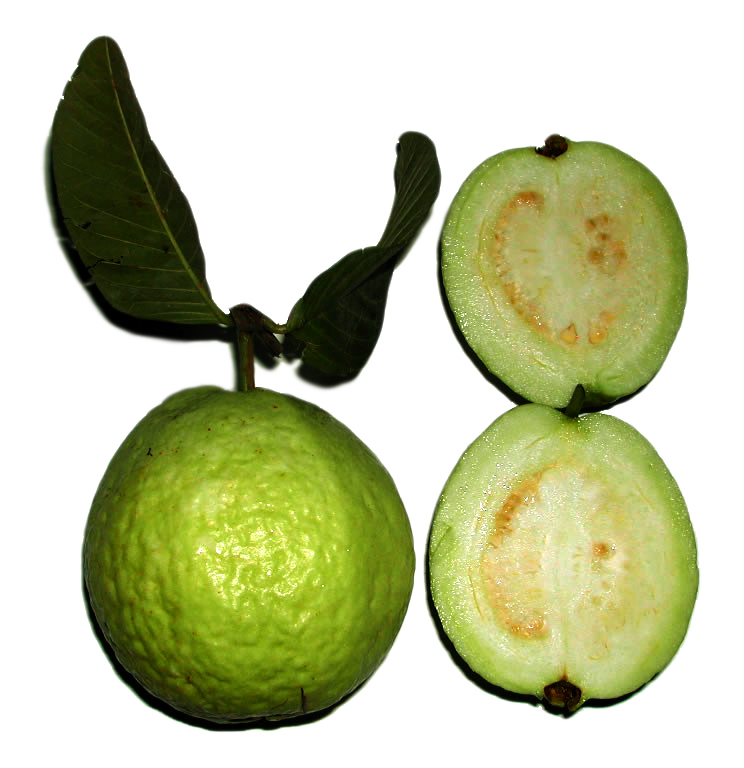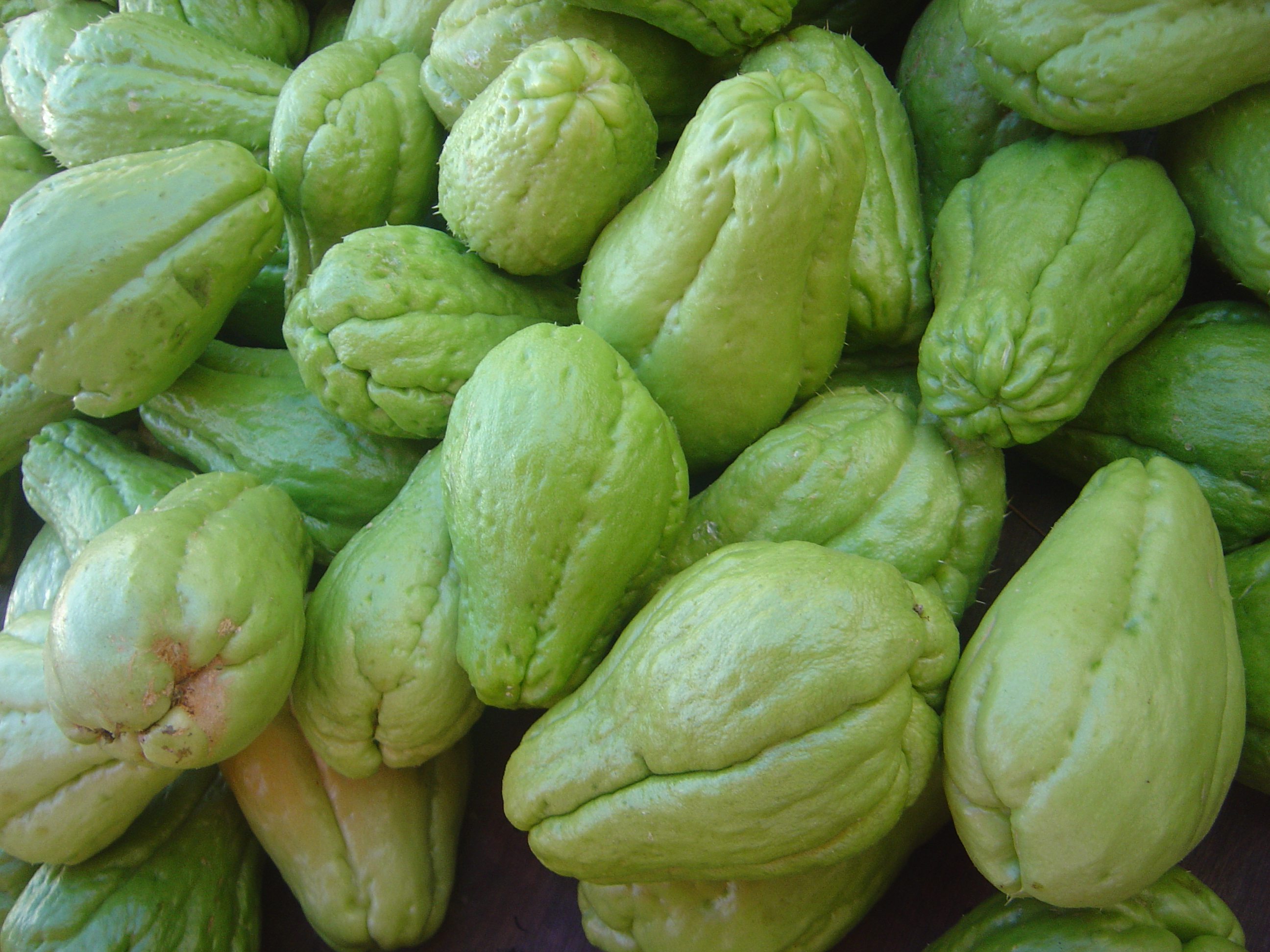
Mexico is a country full of different tastes. There are countless Mexican specialties, but some of the better known fruits and dishes also have their place in the Mexican world of taste. In terms of taste, everything from sweet to sour to spicy is possible and allowed in the Mexican cuisine. Furthermore, some fruits and vegetables are also only available here! In this overview you will find a selection of my personal favorites.
To be clear, I have limited myself to 20 Mexican specialties at first here. But I will surely add some more dishes to this list in the future, since there is a very wide range of delicious Mexican specialities. Have fun exploring!
Sweet Mexican specialities & fruits
Flan
Flan is a sweet pudding served with caramel sauce. It has its origins in France, but is also very popular in Spain and Mexico. Its consistency is somewhat reminiscent of jelly and its taste of rice pudding. It is made from a mixture of beaten egg, milk, sugar and vanilla. A great Mexican dessert! It is best eaten freshly prepared, but for the lazy among you there is also ready-to-eat flan powder*.
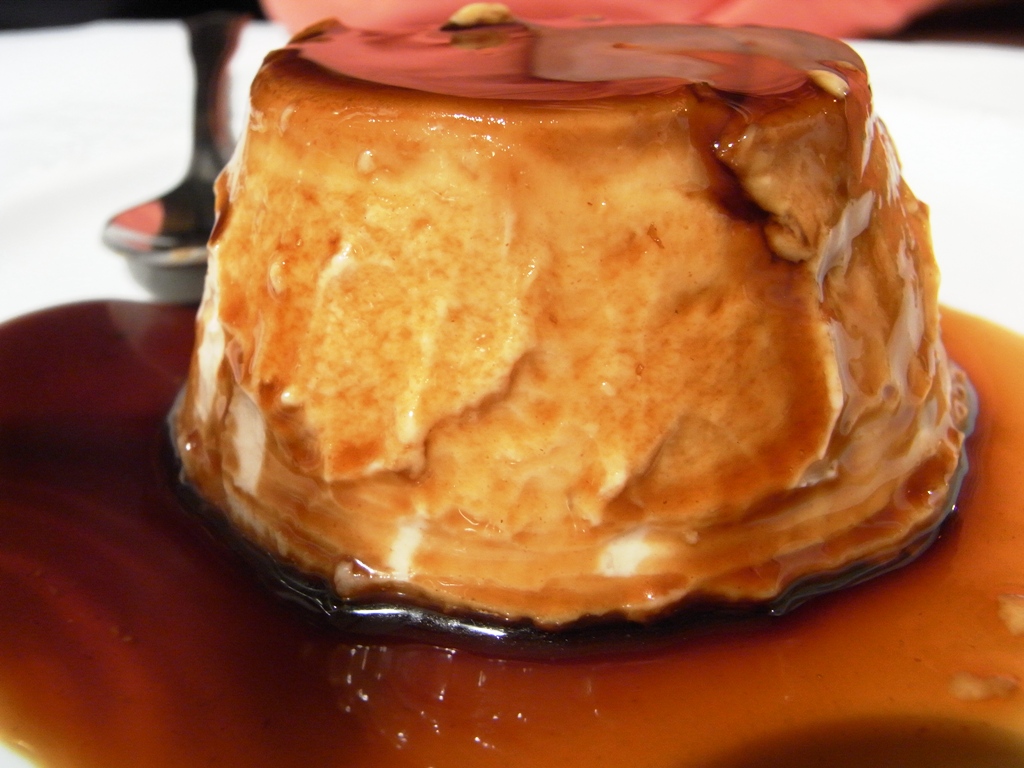
De Javier Lastras from España/Spain – Flan de Turrón, CC BY 2.0, Enlace
Pan de Muertos
This special sweet bread is sprinkled with sugar and often decorated with dried fruits such as figs. It is only baked and sold during a certain time of the year: End of October and in November around the Dia de Muertos (Day of the Dead). On this day, deceased family members and friends are remembered in Mexico. The celebrations can best be described as a mixture of Saint Martin, Halloween and carnival. Because many children dress up, run from house to house with lights to get sweets and many adults drink tequila in honor of the deceased.

En Norma Ps – Trabajo propio, CC BY-SA 4.0, Enlace
Guanabana
The guanabana is a fruit native to tropical regions, which externally resembles a cactus. It is also called a soursop or graviola. This fruit can be eaten raw, but can also be consumed as puree or juice. The juice of this fruit is particularly delicious. It is mostly marketed under the name Graviola juice*. Tasting it is highly recommended!

From USGov – Public domain, Link
Papaya
Papayas are amazing and healthy fruit, which are very expensive in Europe similar to many other fruits! The price per kilo of a papaya in Mexico compared to Germany is -50 to 70%. Meanwhile the quality of the fruit is much higher. In the DACH area you can drink papaya mostly as juice*.
Guayaba/Guave
Guayabas can be found in many South American countries. This citrus fruit is both processed into juice and eaten raw – usually the species Pink Guave* is sold here in the German-speaking countries. In Mexico you can find green and yellow varieties of this fruit. But be careful, it has many small seeds, which are very hard. Therefore I prefer the Guayaba as juice or yoghurt. Its taste can be described as a mixture of grapefruit and orange. Strong citrus aromas, which are not sour but sweetish.
Chico Zapote
Another unique fruit found in Mexico/Central America. Its origin is in Mexico and Costa Rica. From there it has also spread through colonization to some Asian countries with other names. Funfact: This fruit is used as a base for the production of chewing gum! Its flesh resembles a plum, but its sweet taste can hardly be compared to anything else.
Mexican vegetable specialities
Nopales
There is hardly anything more Mexican than this edible cactus. It can even be seen on the Mexican flag. For the heraldic eagle sits on a nopal cactus and in its other claw it holds a snake. The nopal is part of the daily diet in Mexico and its ingredients help with the digestion of fats. In terms of taste, it is comparable to a green pepper, even if this is far from being the complete taste. Nopal is roasted, fried, boiled, served as a side dish with tacos, enchiladas or as a salad with onions. Definitely one of the Mexican specialities you can’t miss when traveling to the land of the tacos!
Elote/corn
Elote is the Spanish word for corn. It is used both for individual corn grains and for a corn cob. If you are a fan of corn, you should try a Elote at a small stand in the streets in Mexico. The presentation is quite unique: the corn cob is placed on a stick, garnished with mayonnaise, crema and sprinkled with chilli powder according to preference.
Chayote
This plant is unique and belongs to the cucurbit family. In its natural form, the chayote has small spines, but these usually have already been removed when you buy it. The chayote has the consistency and color of a potato, but tastes very unique. Definitely try it!
Avocado
Avocados have become a huge trend. However, you don’t know what a ripe avocado really tastes like until you’ve tasted it in Mexico! Sadly, however, the avocado has become a luxury good for the local population as a result of a constant increase in price triggered by the huge quantities exported to the US.
Jicama
The jicama is also an endemic vegetable in Mexico and can best be compared to a kohlrabi. It can be eaten raw as a salad or as a side dish with tacos, as well as cooked. It contains a lot of water and is therefore especially recommended on hot days.

De Eliazar Parra Cardenas from Guadalajara, Mexico – Jicama, CC BY 2.0, Enlace
Salty mexican specialties
There are countless salty Mexican specialties and it was quite difficult to limit myself to a selection. Here you will find both dishes you expect (tacos) and lesser known Mexican specialties like mole.
Tequila & Mezcal
The variations of Tequila and Mezcal are almost infinite. Both are distilled from different types of agave and are very similar in their preparation. You probably know Tequila, but Mezcal is much more traditional! It is still handcrafted and in many regions of Mexico, for example in Oaxaca, it is much more widespread than beer. If you like smoky whiskey and are open for an adventure, you should buy a Mezcal and try it!
Sal de Gusano
Sal de Gusano is a mixture of spices that is often served with mezcal or tequila. It consists of caterpillars that live on the agave plants (yes, you read that correctly), chilli powder and salt. You should not be deterred by the thought that it contains caterpillars. Because it goes with Mezcal like mayo goes with french fries!
Tortillas
Tortillas are the bread of Mexico. These thin flat breads made of corn can basically be added to every meal and almost every dish. There are tortillas in many different colors: white, beige, blue/red (made of blue/red corn) or green (with nopal). If you think you know what delicious tortillas are, you are mistaken! There is nothing that compares to a fresh warm tortilla.

En Luisfi – Trabajo propio, CC BY-SA 3.0, Enlace
Tacos al Pastor
If you’re ever in Mexico City, you should definitely try some Tacos al Pastor. The way they’re prepared reminds me of a kebab. There is even an anecdote that this form of taco selling is inspired by the Turkish kebab in Germany. However, it is pork marinated in chili, often served with pineapple, onions and coriander. The taste is unique and delicious – but beware: very greasy 😉
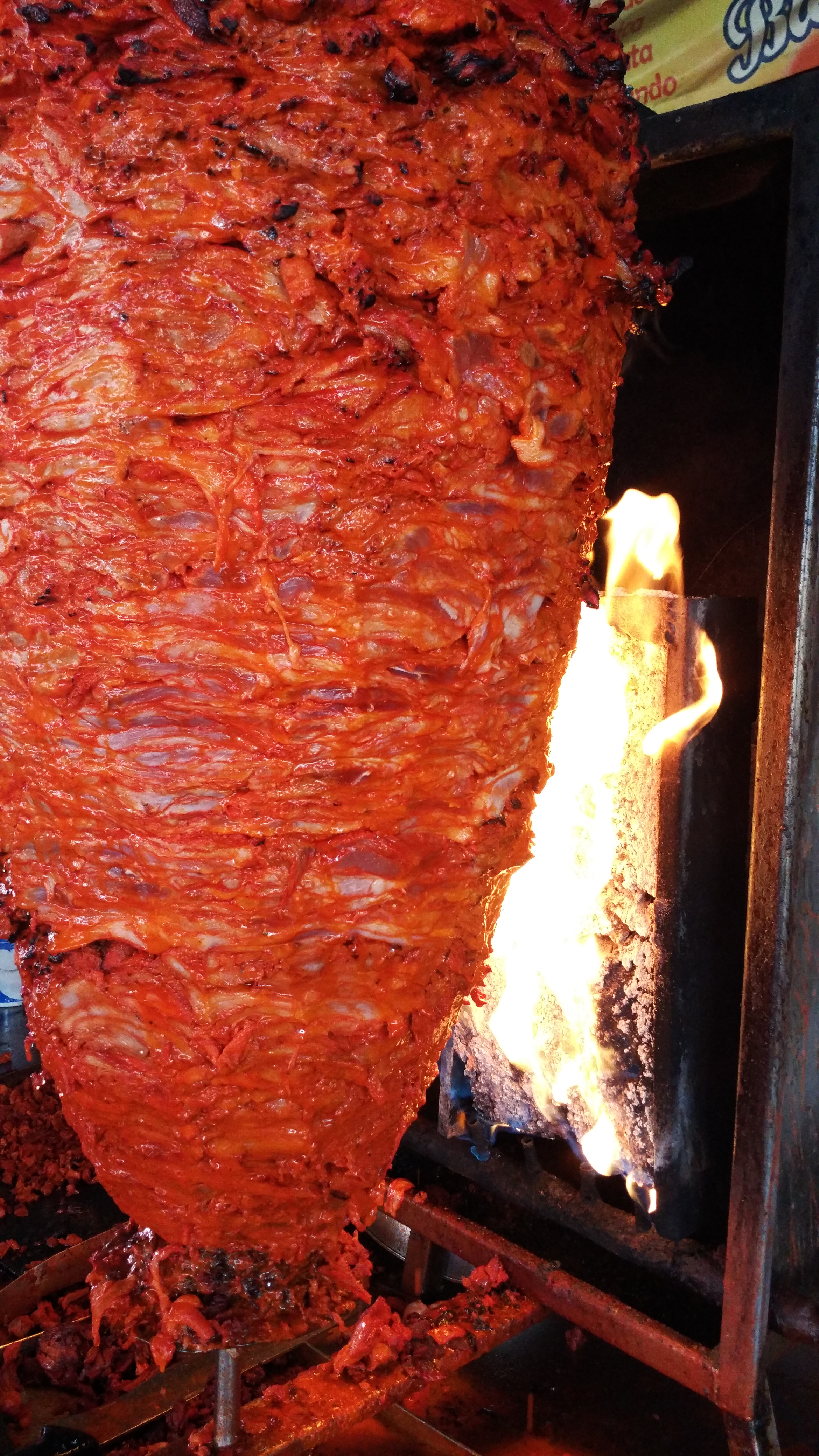
From Popo le Chien – own work, CC BY-SA 3.0, Link
Salsa verde
A salsa verde (green sauce) consists of avocado, tomatillo (small green tomatoes that are only found in Mexico), onions, coriander and a little green chili. A delicacy that is eaten with tacos, quesadillas, eggs and much more!
Mole
A mole is a sauce mix of different chillies. It is very traditional and existed long before the Spaniards arrived in Mexico. In the mole negra (black mole) the salsa is refined with chocolate. It usually has a brown/black color and is served with chicken, rice or as a sauce for enchiladas.

De AlejandroLinaresGarcia – Trabajo propio, CC BY-SA 4.0, Enlace
Enchiladas
Enchiladas are deep-fried corn tortillas filled with meat or vegetables and doused with lots of salsa (verde, roja or mole). The enchiladas are usually decorated with powdered Queso Doble Crema. A particularly popular variation are the enchiladas suizas, which are additionally decorated with crema. They are usually served with rice or salad.
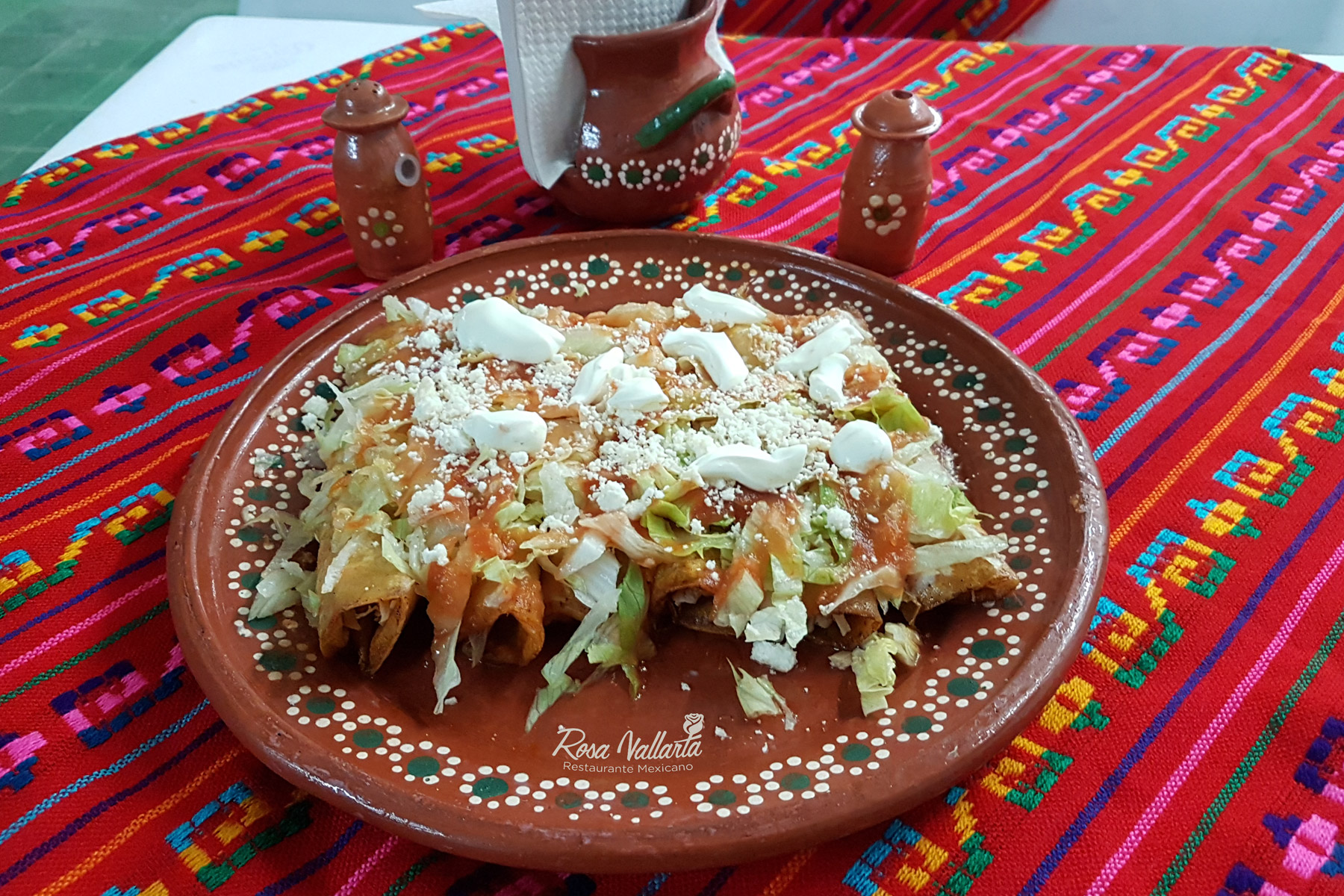
En Ismaelochoa86 – Trabajo propio, CC BY-SA 4.0, Enlace
Queso Oaxaca
This cheese originates from the state of Oaxaca, but it spread throughout Mexico. The taste of this white cheese is not particularly intense when raw. It is often used in quesadillas (tortillas filled with cheese). Its texture is fibrous and therefore it can be pulled apart in threads. It melts well like this! The texture is comparable to mozzarella. Mozzarella was the real inspiration for the Queso Oaxaca. It is also very durable in the warm temperatures in Mexico and is definitely an authentic Mexican specialty. Everyone should try Queso Oaxaca!

By Nsaum75 at English Wikipedia, CC BY-SA 3.0, Link
Chorizo & Longaniza
These sausage specialities are reminiscent of a blood sausage. Some of you may have tried a chorizo in Spain. His equally tasty brother is the Longaniza. It is a spicy sausage and is fried similar to chorizo. Mostly the Longaniza is chopped up and eaten in tacos. A real recommendation for lovers of salty, greasy sausages. These sausages are also a speciality in many other countries of South America such as Argentina and Peru and taste a little different in each region.
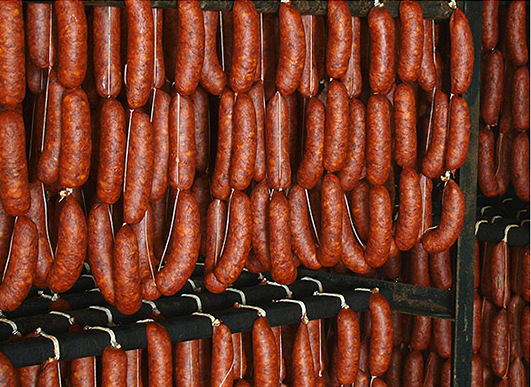
De Amasuela-Luis Lafuente Agudín – Trabajo propio, CC BY-SA 4.0, Enlace
